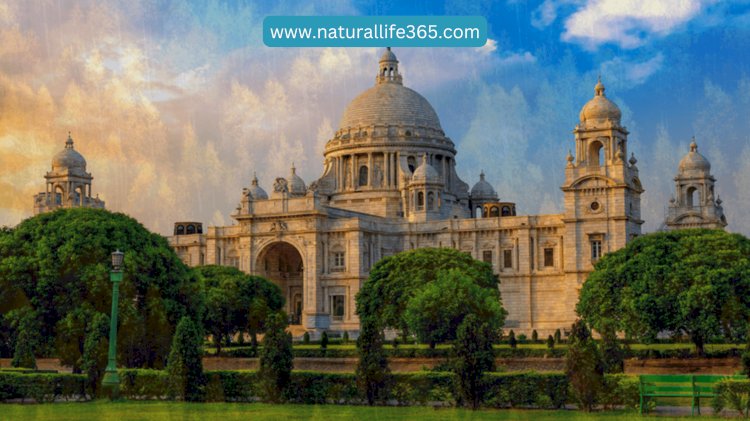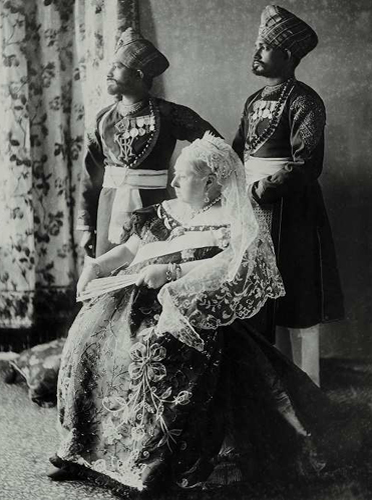The Story Behind the Victoria Memorial in Kolkata: Architecture and Significance
Unveil the story behind the Victoria Memorial in Kolkata. Learn about its architecture, historical significance, and cultural impact.

The Victoria Memorial in Kolkata stands as a testament to the grandeur of the British Empire in India. An iconic symbol of Kolkata, this magnificent structure is an architectural marvel and a significant cultural and historical monument. Built in memory of Queen Victoria, the memorial combines elements of British and Mughal architecture, creating a unique blend that continues to captivate visitors from around the world. In this article, we will delve into the story behind the Victoria Memorial, exploring its architectural brilliance, historical significance, and enduring legacy.
The Origins of the Victoria Memorial

The idea of constructing a grand memorial for Queen Victoria in India was first proposed by Lord Curzon, the Viceroy of India after she died in 1901. Curzon envisioned a monument that would serve as both a tribute to the Queen and a symbol of British power in India. The foundation stone was laid on January 4, 1906, and the construction was completed in 1921. The memorial was funded by voluntary contributions from Indian princes and British officials, reflecting the widespread influence of the British Empire during that era.
Architectural Design and Inspiration
The Victoria Memorial’s architectural design is a blend of Indo-Saracenic, Mughal, and British styles, reflecting the cultural diversity of India and the colonial aspirations of the British. The architect, Sir William Emerson, was inspired by various architectural traditions and sought to create a structure that would be both aesthetically pleasing and symbolically powerful.
Indo-Saracenic Style
The Indo-Saracenic style is a blend of Indian, Islamic, and Western architectural elements. This style was popular during the British Raj, as it represented a fusion of Eastern and Western cultures. The Victoria Memorial's domes, arches, and minarets are typical of this style, with a distinct Mughal influence visible in the chhatris (small domed pavilions) and jali (latticed screen) work. The white Makrana marble used in the construction adds to the monument's elegance and grandeur, making it a visual masterpiece.
You can also read Kolkata Unplugged: Diving Into The Heart Of The City
Mughal and British Influences
The Mughal influence is particularly evident in the large central dome, which is reminiscent of the Taj Mahal. The dome is surrounded by four smaller domes, creating a balanced and symmetrical structure. The British influence is seen in the neoclassical elements, such as the colonnades and the grand staircase leading to the entrance. The combination of these architectural styles gives the Victoria Memorial a unique identity, blending the opulence of the Mughals with the sophistication of British design.
Symbolic Elements and Sculptures
The Victoria Memorial is not just an architectural wonder; it is also rich in symbolic elements and sculptures that convey the history and significance of the British Empire in India.
The Angel of Victory
One of the most striking features of the Victoria Memorial is the statue of the Angel of Victory, which crowns the central dome. This 16-foot-high bronze statue is mounted on ball bearings, allowing it to rotate with the wind. The Angel of Victory symbolizes the triumph of the British Empire and serves as a reminder of the power and glory of the British monarchy.
Statues and Relief Panels
The memorial is adorned with numerous statues and relief panels that depict scenes from the life of Queen Victoria, as well as significant events in British and Indian history. The marble statue of Queen Victoria seated on her throne is a central feature, exuding an air of dignity and authority. Surrounding the memorial are statues of key figures from the British era, including Lord Curzon, Charles Cornwallis, and Arthur Wellesley, highlighting their contributions to the British Empire in India.
Gardens and Surroundings
The Victoria Memorial is set amidst sprawling gardens that cover an area of 64 acres. These well-manicured gardens are designed in the English style, with lush lawns, water bodies, and walking paths that provide a serene environment for visitors. The gardens are an integral part of the memorial's design, enhancing its beauty and providing a tranquil space for reflection.
The Historical Significance of the Victoria Memorial
While the Victoria Memorial is undoubtedly an architectural masterpiece, its historical significance extends far beyond its physical beauty. The memorial stands as a symbol of the British Raj and its complex legacy in India.
A Tribute to Queen Victoria
The primary purpose of the Victoria Memorial was to honor Queen Victoria, who was the Empress of India from 1876 until she died in 1901. The memorial commemorates her long reign and her role in shaping the British Empire. Queen Victoria was a central figure in the expansion of British influence in India, and the memorial serves as a reminder of her impact on Indian history.
Symbol of British Imperial Power
The Victoria Memorial also symbolizes the power and authority of the British Empire in India. Built during a time when the British were consolidating their control over the subcontinent, the memorial was intended to showcase the grandeur of the British Raj and its achievements. The imposing structure, with its blend of Western and Eastern architectural styles, reflects the British desire to impose their cultural values on India while acknowledging the country's rich heritage.
Cultural and Political Significance
Over the years, the Victoria Memorial has evolved from a symbol of British imperial power to a significant cultural and historical monument for India. Today, it is one of the most popular tourist attractions in Kolkata, drawing visitors from all over the world. The memorial houses a museum that contains a vast collection of artifacts, paintings, and manuscripts related to the British period in India. These exhibits provide valuable insights into the history of the British Raj and its impact on Indian society.
The Enduring Legacy of the Victoria Memorial
The Victoria Memorial has remained a prominent landmark in Kolkata for over a century, and its legacy continues to resonate with people today. As a symbol of both colonial rule and India's rich cultural heritage, the memorial occupies a unique place in the nation's history.
Preserving History and Heritage
One of the key aspects of the Victoria Memorial's legacy is its role in preserving the history and heritage of the British period in India. The museum within the memorial offers a comprehensive overview of this era, with exhibits that cover a wide range of topics, from the life of Queen Victoria to the administration of the British Empire. These exhibits are crucial for understanding the complex history of colonialism in India and its lasting effects on the country.
A Reflection of India's Cultural Diversity
The architectural design of the Victoria Memorial, with its blend of British and Indian elements, reflects the cultural diversity of India. The monument serves as a reminder of the country's rich heritage and the various influences that have shaped its history. In this sense, the Victoria Memorial is not just a relic of the past but a symbol of India's multicultural identity.
Contemporary Relevance
In contemporary times, the Victoria Memorial has taken on new meanings and significance. For many, it is a symbol of Kolkata's rich history and a testament to the city's resilience and adaptability. The memorial also serves as a venue for cultural events, exhibitions, and public gatherings, making it a vibrant part of Kolkata's social and cultural life.
You can also read Tagore and the Bengali Renaissance: An Exploration of His Influence on Indian Culture and Beyond
The Victoria Memorial in Kolkata is more than just a monument; it is a symbol of the city's rich history, cultural diversity, and enduring legacy. From its architectural brilliance to its historical significance, the memorial continues to captivate and inspire visitors from around the world. As a tribute to Queen Victoria and a reminder of the British Empire's influence in India, the Victoria Memorial stands as a powerful reminder of the past while also looking forward to the future. Its enduring legacy is a testament to the complex and multifaceted history of India and the British Raj, making it a must-visit destination for anyone interested in exploring the rich cultural heritage of Kolkata and India.
Frequently Asked Questions
1. Who designed the Victoria Memorial in Kolkata?
The Victoria Memorial was designed by British architect Sir William Emerson, who combined elements of Indo-Saracenic, Mughal, and British architectural styles in the monument.
2. When was the Victoria Memorial completed?
The Victoria Memorial was completed in 1921, with its foundation stone laid on January 4, 1906.
3. What architectural styles are reflected in the Victoria Memorial?
The Victoria Memorial reflects a blend of Indo-Saracenic, Mughal, and British architectural styles, creating a unique and visually striking structure.
4. What is the significance of the Angel of Victory statue?
The Angel of Victory, located atop the central dome, symbolizes the triumph of the British Empire. The statue is designed to rotate with the wind, adding a dynamic element to the monument.
5. What can visitors see inside the Victoria Memorial?
Inside the Victoria Memorial, visitors can explore a museum that houses a vast collection of artifacts, paintings, and manuscripts related to the British period in India, offering insights into the history of the British Raj.
6. Why is the Victoria Memorial an important cultural landmark in Kolkata?
The Victoria Memorial is an important cultural landmark in Kolkata because it represents the city's rich history, cultural diversity, and the enduring legacy of the British period in India. It continues to be a significant tourist attraction and a venue for cultural events.
If you value these free online resources provided by Natural Life 365, please consider supporting my website by sharing the blogs ![]()








































